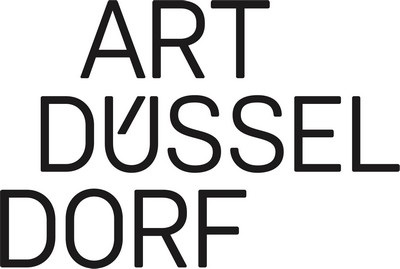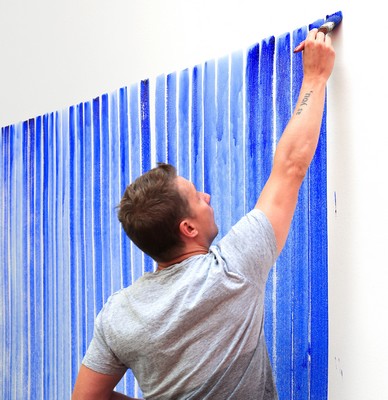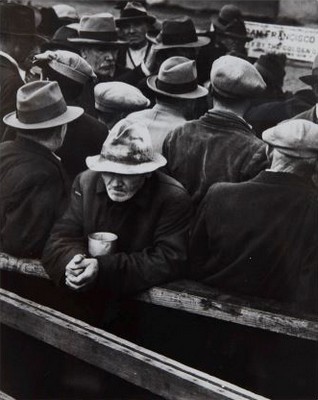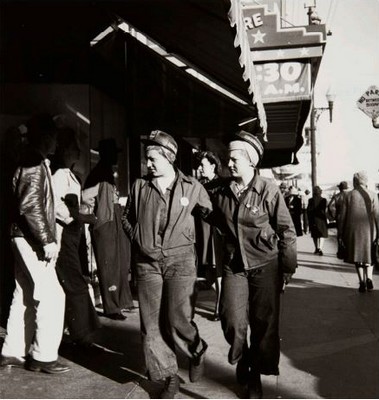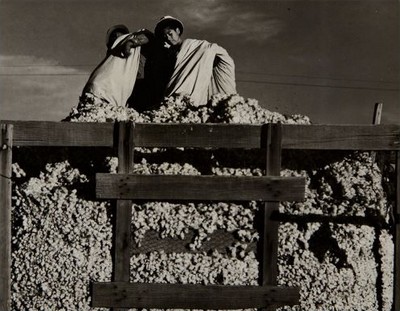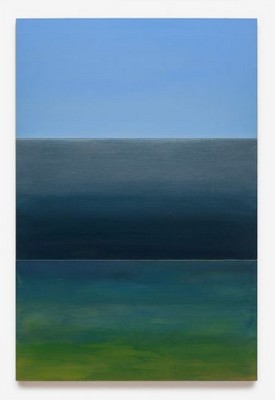Will Boone: Hell is Wet
David Kordansky Gallery, Los Angeles
March 18 – April 22, 2023
David Kordansky Gallery presents Hell is Wet, a solo exhibition of new paintings by Will Boone. In this exhibition, Boone showcases his recent experimentations on canvas with enamel, bar top resin, and auto body paint—known as “candy paint” in Houston—and considers his personal connection to place and storytelling through the accumulation of found objects.
Generating content from an unlikely array of sources, Will Boone makes works with graphic power matched by their palpable physicality. His technical processes are informed by vernacular languages of numerous American subcultures, from the DIY ethos of punk to the precision of industrial manufacturing, typically reflective of the area in which the artist lives. In Hell is Wet, Boone makes visible the localized nuances associated with the American South and Southwest.
The paintings in this exhibition incorporate found relics that chart Will Boone’s physical and experiential trajectory. A lucky rabbit’s foot, a black Stetson hat, and a splayed Santa Claus suit appear embedded and crystalized in vibrant red and yellow canvases, forming a visual biography of the artist’s interactions, travel, and residences over the past five years. Since his return to Texas in 2020, Will Boone has shifted his focus to chronicle Gulf Coast ephemera. His practice of collecting and inserting physical objects into the canvas foregrounds the connection of the painting to a specific place and emphasizes the relationship painting has to drawing and sculpture.
Over the last decade, Will Boone has lived in Philadelphia, New York, Los Angeles, Canyon Lake, and Houston, between which lies an open landscape of discarded materials. When transitioning to a new place, Boone typically edits out the cumbersome items he’s accumulated, saving space for the unusual souvenirs he’s collected that memorialize past events in the artist’s life. These souvenirs find their way into Boone’s new work, forming a material map of his past and distilling life into a series of objects. The works are akin to curio cabinets typically found in homes, where vital family heirlooms and kitschy artifacts are neatly arranged on display shelves, or like religious reliquaries or fereters that contain holy remnants such as the clothing and bodily fragments of saints.
For Will Boone, objects act as proof of life and myth, often spinning a counternarrative tied to the specific region in both the objects’ materiality and the geographic context in which they were found. Literary and music sources also texture Boone’s process. Drawing inspiration from Texan songwriters such as Townes Van Zandt and Billy Joe Shaver, and authors like Harry Crews and Flannery O’Connor, Boone’s approach to storytelling develops not just by the collecting of things but also through the narrative tropes associated with each region. The open highway explored across generations of country and western singers and the Southern grotesque of Crews’s characters are foundational references for the preliminary research Boone embarks upon to make his work. In his visual storytelling, Texas is a swampy, damp, and humid environment, and the items sourced from this wet landscape are warped and discarded, revealing a gothic darkness evocative of the rural places he frequents. In Wet Weather Creek (2023), a lucky rabbit’s foot keychain found in a nearby dry limestone creek bed forms a lump at the center of the composition. Resin and paint physically pull marks further into the depths of the accumulating surface, creating voids that can subsequently be loaded with more material.
While he begins with the traditional painter’s support of stretched canvas, Boone quickly departs from the standard painterly procedure, relying instead on an instinctual feel for his materials. The embedded objects nested within the bar top resin disrupt the standard flatness of the picture plane, creating a slightly protruding silhouette of each form and introducing a texture that will continue to inform the painting as it evolves. Industrial-grade bar resin is used not simply as a sealant but also as another type of paint. The material itself calls to mind the range of bars and roadhouses that populate the Lone Star State, which are fundamental touchstones to its mythology and folklore.
The artworks on view emerge in both two- and three-dimensional terms, creating a finished relief that shows Boone pushing the materiality and sculptural possibilities of painting in equal measure. The recurring Saturn yellow and candy apple red paint colors, layered with viscous bar top resin, form an indestructible amber-like vessel that connects these paintings both to car culture in Houston and more art historical references such as Donald Judd’s Cadmium Red works, which Boone likens to the color of driving at night. In Hell is Wet, Boone displays these otherwise unassuming and unexpected objects in a manner that simultaneously distorts them and turns them into objects of wonder.
Will Boone (b. 1982, Houston) has been the subject of solo exhibitions at Karma, New York (2022); Contemporary Arts Museum Houston (2019); and Rubell Family Collection, Miami (2014). A major installation was featured in Desert X 2017, Coachella Valley, California (2017). Other group shows include Zombies: Pay attention!, Aspen Art Museum, Colorado (2019); White Trash, Luhring Augustine Bushwick, Brooklyn, New York (2017); Prototypology, Gagosian, Rome (2016); Fétiche, Venus Over Manhattan, New York (2016); In Different Ways, Almine Rech, London (2016); and Love For Three Oranges, Gladstone Gallery, Brussels (2015). Boone lives and works in Houston and Comal County, Texas.
DAVID KORDANSKY GALLERY
5130 W. Edgewood Pl., Los Angeles, CA 90019
______________




